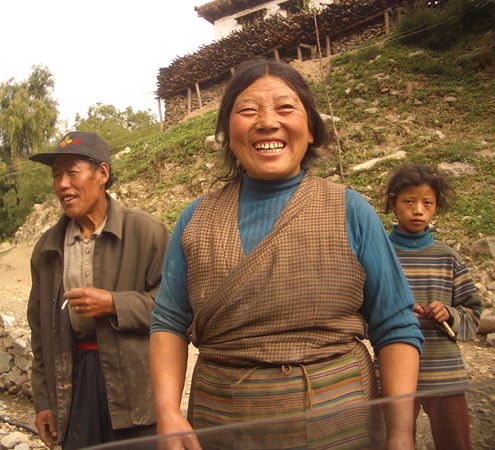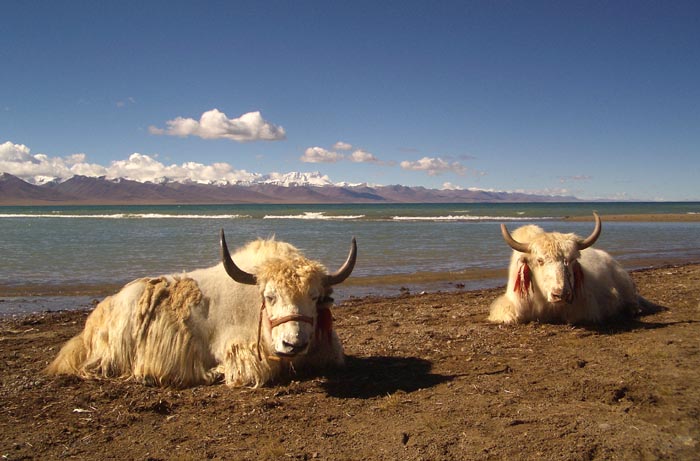| Home | Tibet September
- October
2005 (18 days) |
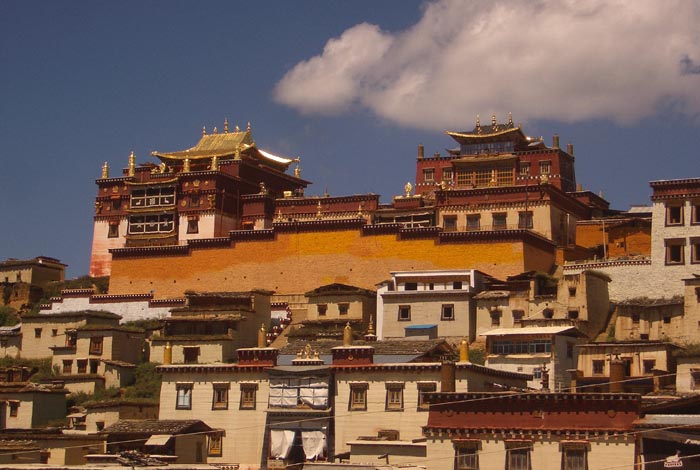 Like many travellers, I have always dreamed of visiting Tibet. It is mystical and famous but yet a remote, distant and a hard to reach place. 99% of its visitors fly into Lhasa and but just think of all the glorious scenery you would miss zooming past at 35000ft !! With that in mind, the 7 day overland journey by jeep from Yunnan to Lhasa was the best idea ever. Zhongdian in Northern Yunnan is the last stop for the public buses and our departure point for one of the most incredible over-land journeys in this planet. Songzhanlin monastery, Zhongdian (9/2005). |
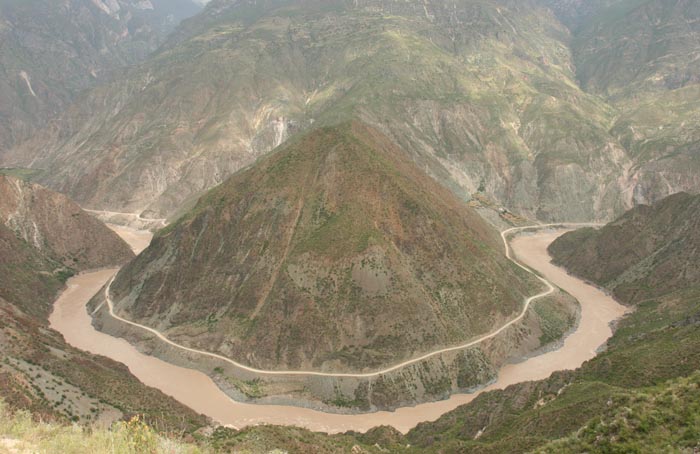 The Mekong, Yangtze and Salween rivers flow parallel within 50km of each other yet empty into 3 separate seas thousands of kilometers downriver. You would expect that any journey from the plains of Yunnan to the highest plateau in the world to be amazing and this trip certainly was just that. Yangtze River, Northern Yunnan (9/2005). |
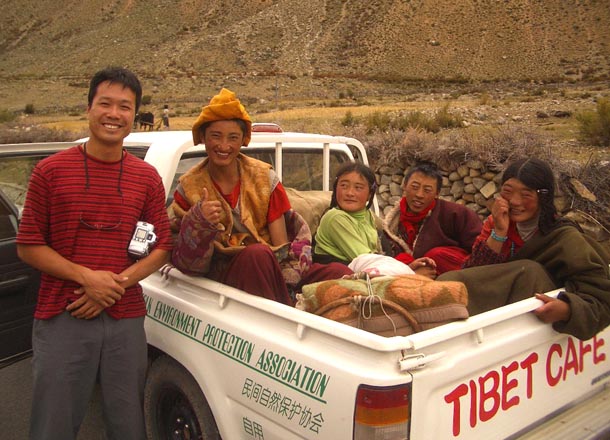 On our journey to Lhasa, we often picked up "hitch-hikers", Tibetan pilgrims on their way by foot to the capital. Tibetans scattered throughout this vast region strive to make a once in a lifetime pilgrimage to Lhasa. The walk can take up to 3 months so they always happy for a bit of help. Kham region of Eastern Tibet. |
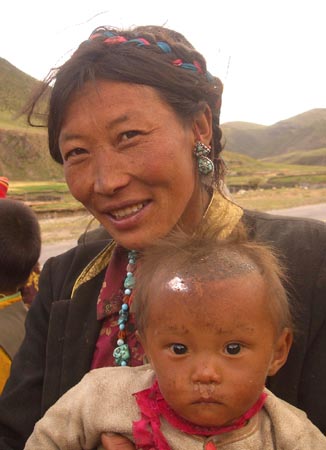
|

|
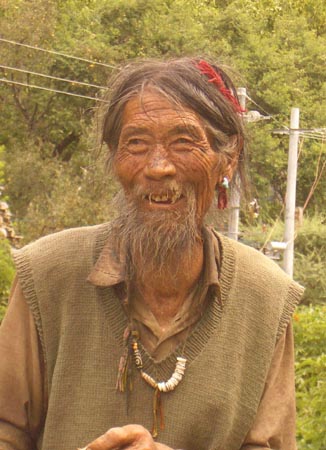
|

|
|
When I first started the journey to the roof of the world I was eager to see the landscapes and mountains. What turned out to be the real highlight was the people, their infectious smile, scruffy clothes, funny jewelry, weather-beaten faces and curious looks. |
 Tibetan are a fervent and devout people. The monastery is usually the heart of the village and families are proud to "donate" at least one of the family to monk-hood. Monks practicing the re-enactment of a battle-scene for an festival/ceremony. Pomi, Eastern Tibet (9/2005). |
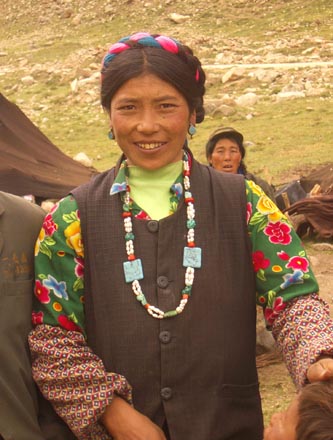
|
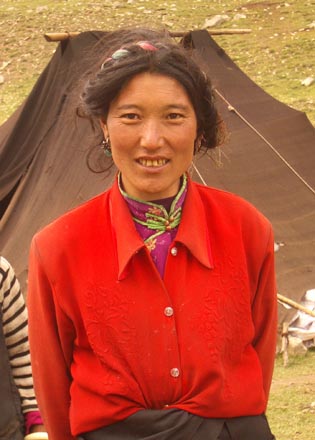
|
|
Even the scruffiest and poorest of Tibetans such as the nomads yak-herders who venture about their whole lives in tents, dress up in colorful traditional dress and elaborate jewelry. High pastures of Eastern Tibet. |
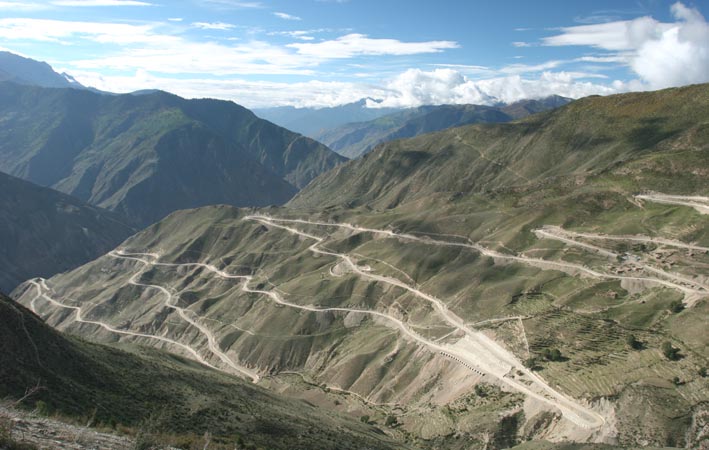 An incredible engineering feat by the Chinese government, forging the 1700km journey from the plains of Yunnan to the highest plateau in the world. The route takes you from 2000m river gorges to 5000m passes, sometimes up and down a few times per day. Having a patient jeep driver is a must for the hundreds of photo stops and scenery gazing breaks. Eastern Tibet (9/2005). |
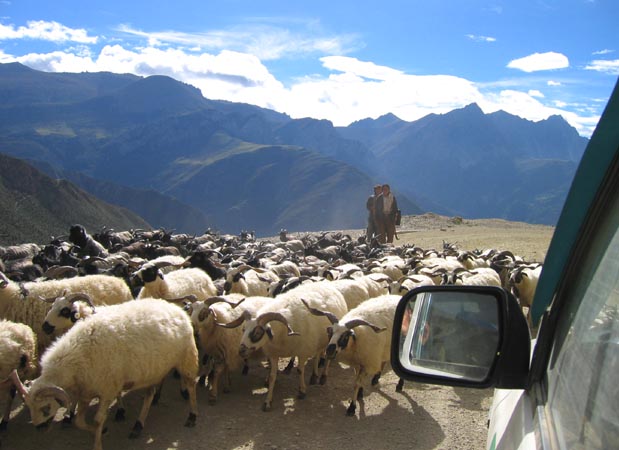 Away from the Lhasa region (where the airport brings in and out thousand of tourists), Tibet is almost devoid of outsiders. In 7 days we only saw 3 other foreigners. It is a special feeling to visit places on the very frontier of our super-heavily touristed world and I really feel lucky to have seen this beautiful and remote corner of our world. Traffic jam on the long and lonely Tibet-Yunnan highway (9/2005). |
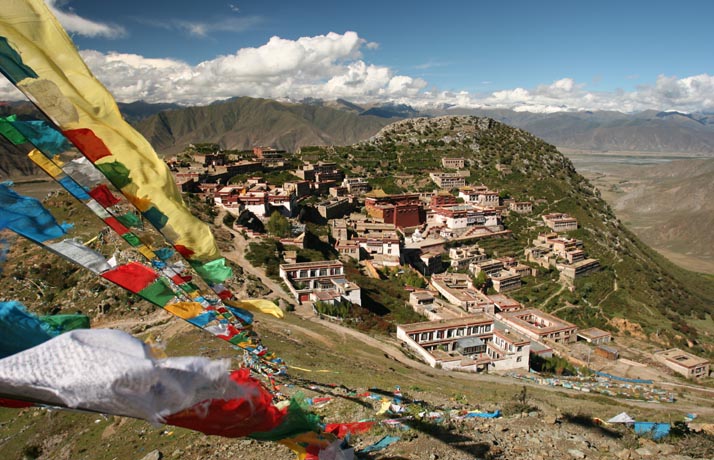 There are hundreds of monasteries in Tibet inspite of the efforts of the 1966 Cultural Revolution to destroy them all. Ganden Monastery perched on a 4200m saddle is amongst the most majestic of them all. Central Tibet (9/2005). |
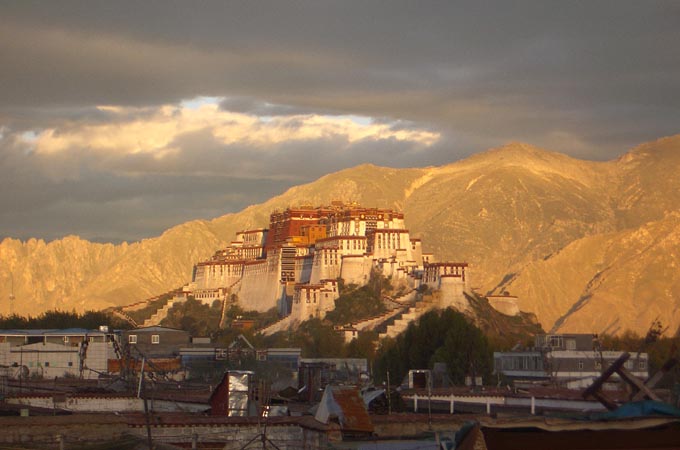 Tibet has many unforgettable scenes. Potala palace sunrise was one of the best. View from the hotel roof-top terrace, Lhasa. |
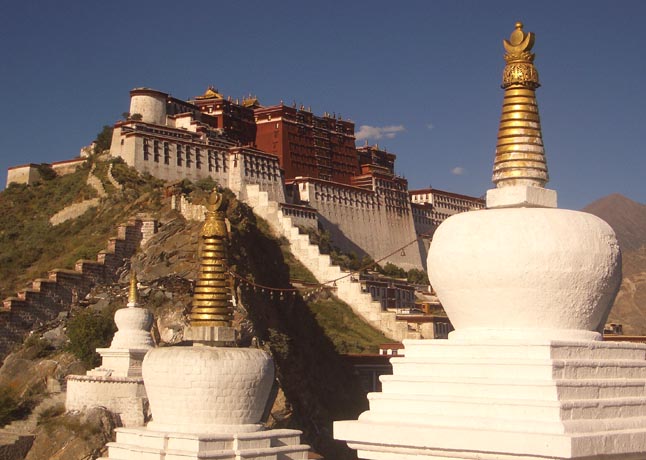 I have seen a lot of palaces and temples in my travels and the Potala could be the best of the lot (together with India's Taj Mahal). During my 4 day stay in Lhasa I visited it everyday with my eyes wide open in awe and amazement. |
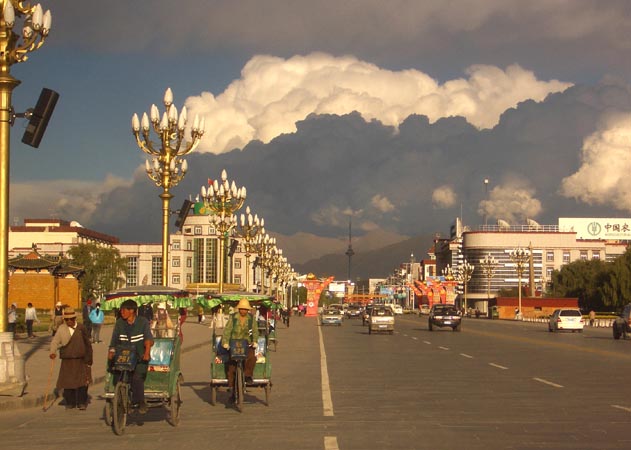 Once a large Tibetan village dotted with monasteries and palaces, Lhasa is now modern Chinese city with its signature wide boulevards, cars and all the signs of "progress". Storm clouds brewing over downtown Lhasa (9/2005). |
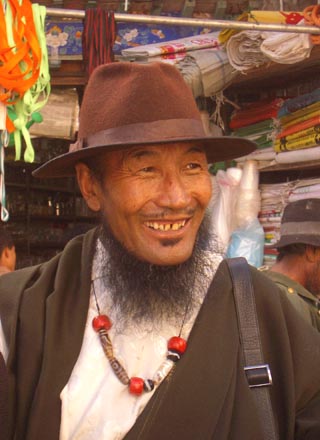
| 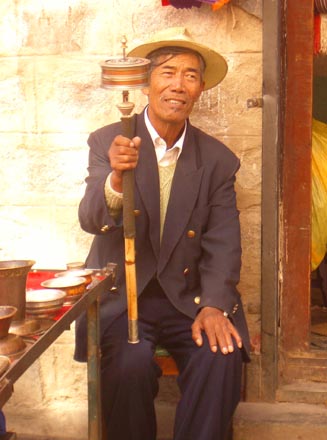
|
|
Lhasa is a colorful and cheery place. Tibetans from all over their vast country converge here to trade, meet, pray etc. Barkhor, Lhasa. |
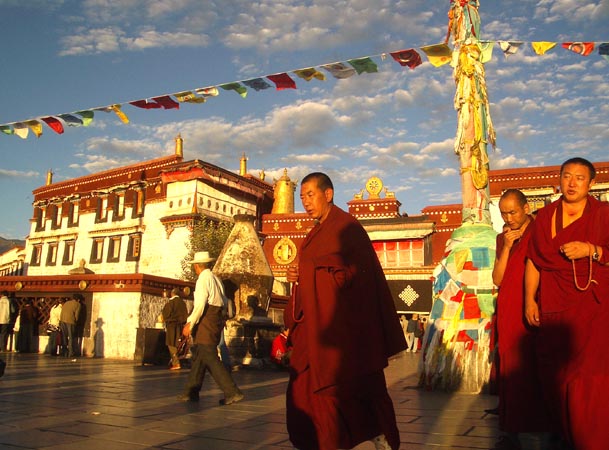 The Johkang Monastery in Lhasa is the spiritual heart of Tibet. It is the Mecca-Jerusalem of the Tibetan faith. |
 Burgundy, the distinctive color of the Tibetan monk. Sera Monastery, Lhasa (9/2005). |
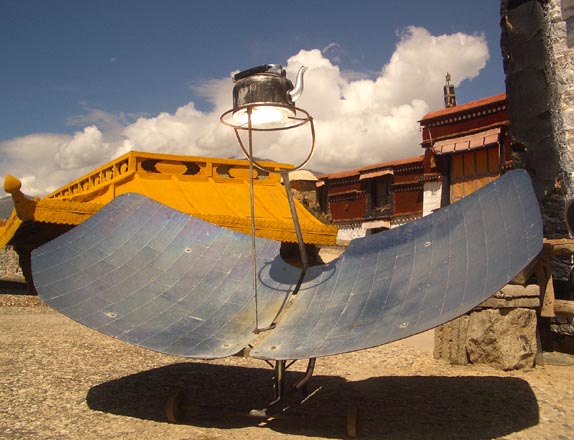 Solar hot water heaters can boil a pot of water in 2 hours. Rooftops of Lhasa (9/2005). |

Boeing 747s, elevated highways, bullet trains and skyscrapers is the future vision of Tibet as proposed by the Chinese government in Beijing. Poster in an alleyway, Lhasa. |
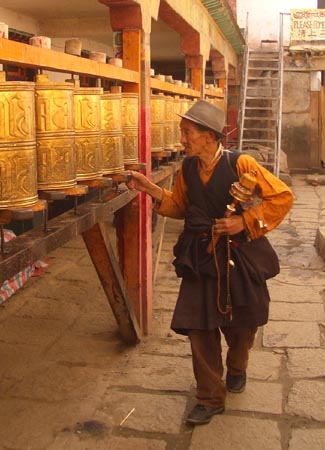
Each turn of a prayer wheel (both the one lining the temple walls and the hand-held one) supposedly sends hundreds of prayers to the heavens. Monastery, Lhasa. |
 Muslims with their distinctive skull-caps have come to Tibet in small numbers to trade and have established a muslim neighborhood in Lhasa. Most have come from Xinjiang and even as far as the 'Stans to the west. |
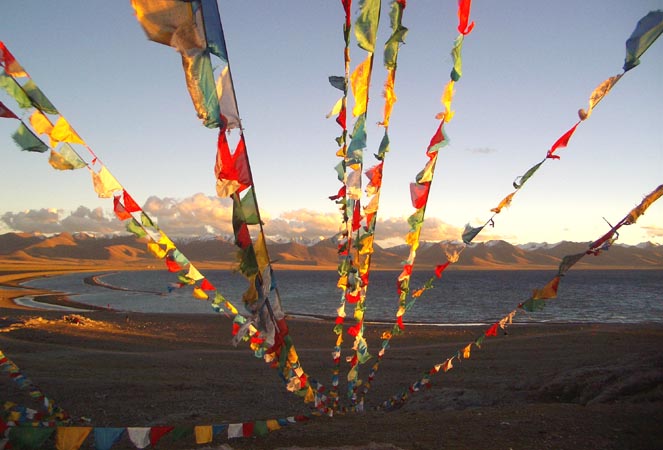 Nam-Tso Lake, a magnificent 2000 sq km freshwater lake on top of the Tibetan Plateau at 4700m above sea level. (9/2005). |
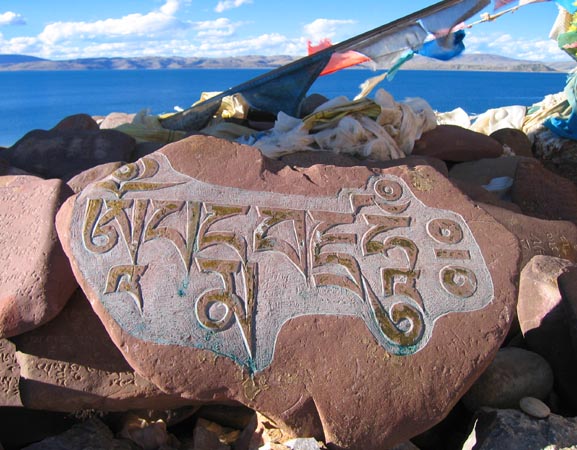 The prayer flag and the mani stone, 2 ever-present symbols of Tibet with dot the landscape. Nam-Tso Lake. |
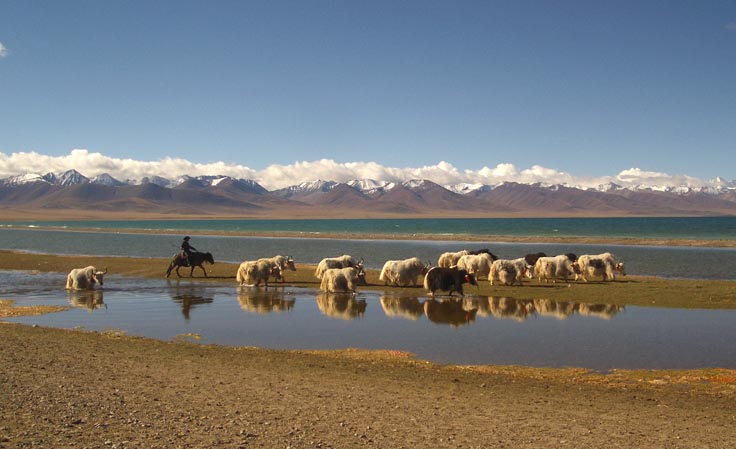 Yak herders on the banks of Nam-Tso Lake (9/2005). |
 After jeep'ing it in to Tibet, we were determined to jeep it out as well. The 5 day trip from Lhasa to Katmandu is a popular route but still a rough and tumble trip. Scruffy playful kids greet us during a rest-stop. Shegar (10/2005). |
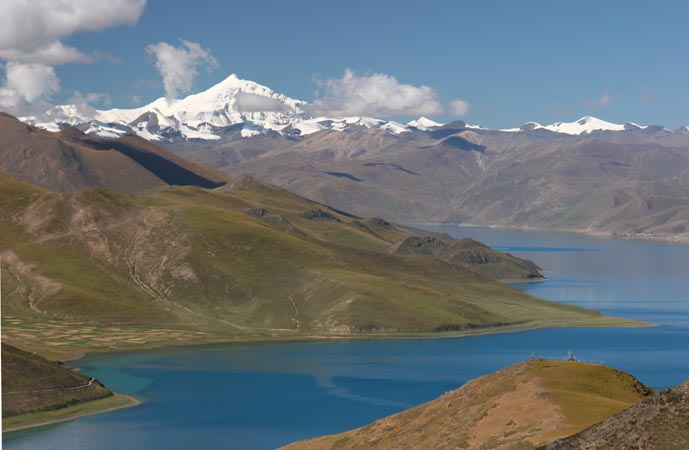 Yamdrok-Tso lake, one of the many mind-blowing sights along the Lhasa to Katmandu overland route. |
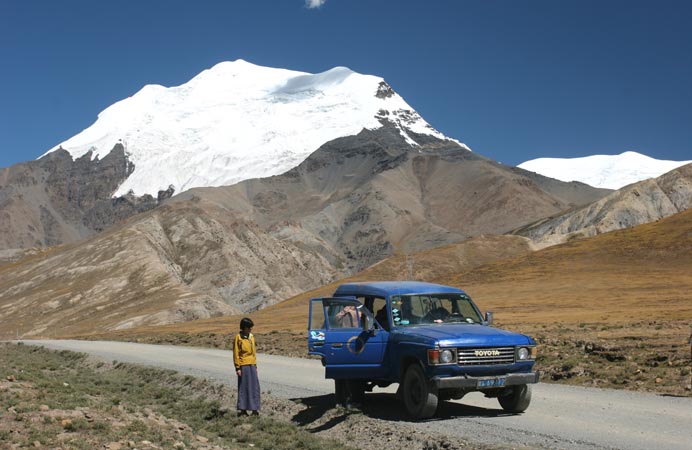 Just another 7000m peak on the Lhasa to Katmandu overland route. |
 5300m high PangLa pass offers one of the most outstanding vistas in all the Himalayas. The main Himalayan spine including 5 of the 14 highest mountains in the world are in clear view. Mt. Everest (8848m) is the triangular pyramid on the left and Cho Oyu (8201m) is the white massif to the right. I doubt I will ever see a mountain panorama which will top this. Lhasa to Katmandu overland route (10/2005). |
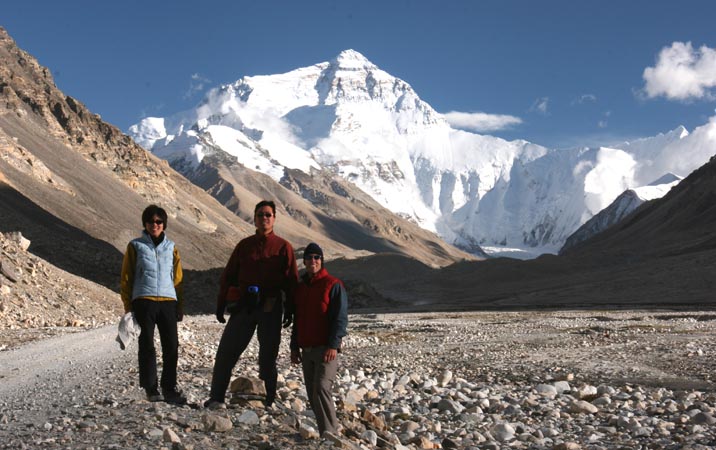 Mt Everest's north face viewed from the Rongphu valley. The icy summit of the world's highest mountain towers 4000m above the dry rocky desert. It is an awesome sight. Everest North Base Camp, Rongphu, Tibet (10/2005). |
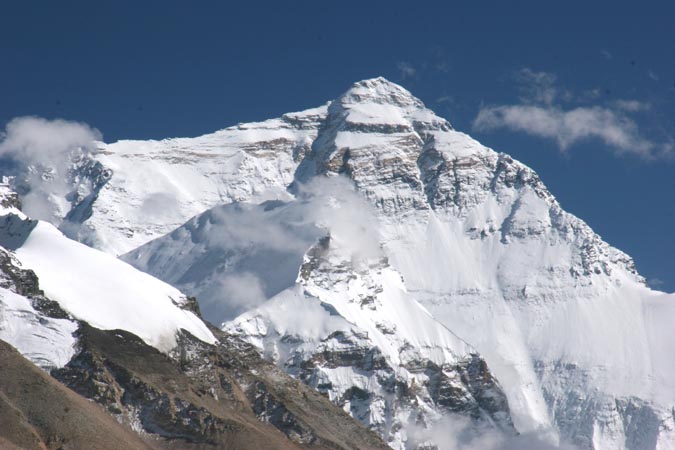 Seeing with your very own eyes the highest point on our planet is a special feeling. It is a once in a lifetime must-do for anyone who loves and appreciates the mountains. Everest summit (8848m) is still over 20km away. This view from North base camp (5100m) is the furthest point a trekker can venture without technical equipment and a thousand dollar entry permit. |
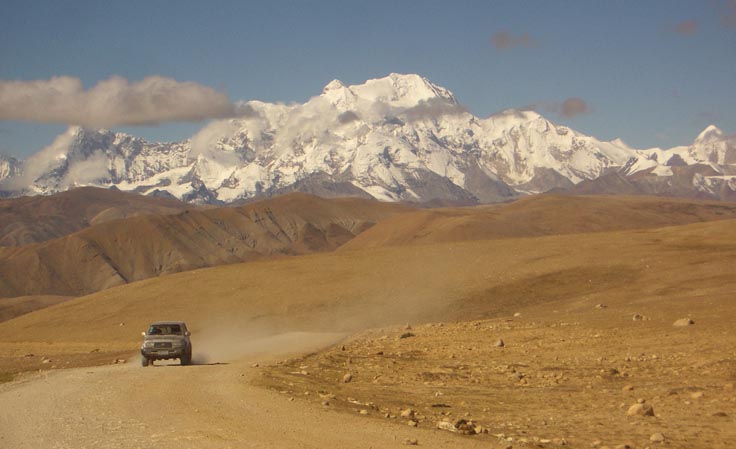 Typical Tibetan landscape is high and dry rocky deserts punctuated by enormous gleaming white massifs. Shishapangma, the world's 14th highest peak, is one of the most impressive. Nearing the Tibet/Nepal border on the Lhasa to Katmandu overland route (10/2005). |
|
Tibetans are a hardy bunch. They live year-round in one of the harshest climates on earth without any modern amenities such as central heating or running water, yet they seem to be always smiling. Khampa people, Eastern Tibet (9/2005). |
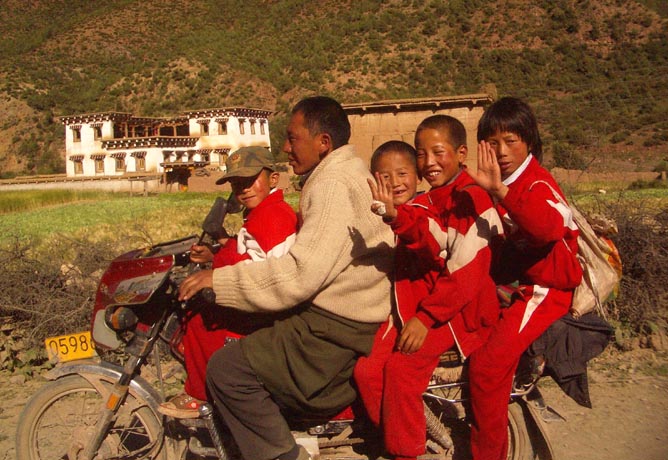 5 on a motor-bike is a common sight in this part of the world. School-kids, Eastern Tibet (9/2005). |
|
Tibet has a unique landscape, culture and people which is simply not found anywhere else in the world and now is a great time to visit it. The issues with the Beijing government are settling down a bit, new roads are making it more accessible, there is enough tourist infrastructure for a comfortable visit and the vast land is still more or less untouched. Sun-tanning yaks, Nam-Tso Lake. |
| Previous Page |
